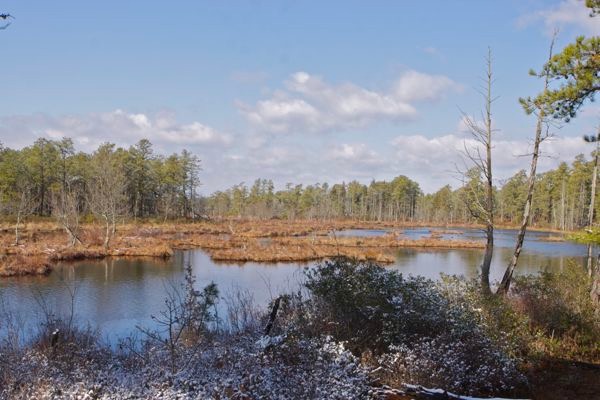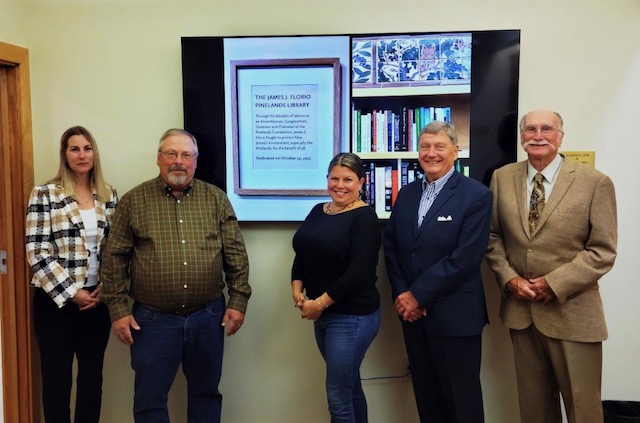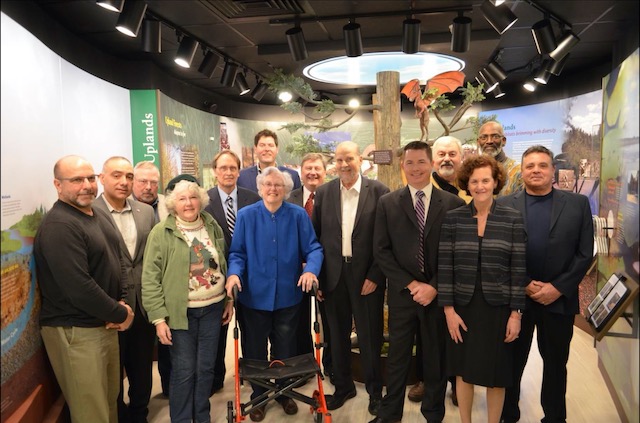Criticism Of Pinelands Commission’s Approval Of DEP’s Wildfire Logging Plan Is Generating Public Debate And Strong Pushback
DEP Forest Fire Spokesperson Flat Out Lies To Press In Defending Plan
Conservationists Who Signed Off On This Are Embarrassed
Friends of Murphy DEP, Loggers, And Professional Foresters Pushing Back Hard
Theres’ been quite a large public response, mostly expressing outrage, on the Pinelands Commission’s approval of the DEP wildfire logging plan that would cut and remove 2.4 million tress from about 1,400 acres, create 13 miles of 50 foot wide clearcut “firebreaks, and apply toxic herbicides on over 1,000 acres in the heart of protected Pinelands forests.
Not surprisingly, those responsible for preparing, approving and signing off on the plan are looking quite bad.
I) Some metrics, just days after the story broke:
1) Longtime veteran investigative reporter and columnist Bob Hennelly’s expose at Insider NJ is getting a lot of volume. Over 1,350 readers have read the story. The reader comments are brutal!
2) In less than 24 hours since it was posted last night, my petition at Change.org has been read 3,757 times and endorsed by 211 people. Those numbers will grow as NJ’s grassroots advocacy groups circulate the petition to their members.
[Update – Sorry, I just learned that change.org is a commercial fundraising operation. Sorry for that. I am taking the petition down right now.]
I don’t know how many people have called the Gov. at 609-292-6000 to demand he veto the minutes, but I’ve spoke in depth with the Gov.’s office constituent relations staff.
3) My website (Wolfenotes.com) posts have had over 400 NJ hits.
4) Other reporters from major metropolitan newspapers are working on the story, so more shoes are likely to drop.
5) Pinelands resident and Democratic Party operative Bill Caruso sent me a Facebook post that is generating a lot of comments, many of which defend the logging plan and object to it being called a “clearcut”. Comments are restricted and Bill has no responded to my request that he allow me to reply to comments there. I interpret this as evidence of political pushback (instead of Russian trolls, there are conservation group members manipulating and distorting the conversation!).
[Update – Bill tells me:
I don’t have any control over the post or commenting abilities. I’m not the moderator
6) Emile DeVito on NJCF has not responded to several questions I posed to him, including how the plan contradicts a recent op-ed he wrote on Pinelands wildfire. I interpret that avoidance as an attempt to duck criticism for signing off on and/or not opposing this disastrous plan. The same goes for Carleton Montgomery of PPA.
They all kept this disaster under the radar, instead of blowing the whistle on it and fighting to stop it.
They, like the Pinelands Commission, caved to the blatant political pressure of the DEP Firemen (i.e. “it’ll be YOUR fault if a wildfire kills someone”).
II) Lies, Junk Science, And Spin – Some troubling developments:
1. NJ Forest Fire spokesperson Caryn Shinske flat out lied to reporter Bob Hennelly when she said this:
Tree removal will focus on the smallest snow-bent pitch pine trees first, and an intact canopy will be maintained across the site.”
That is absurd and flat out false.
An intact canopy will not be maintained. Here’s how the Pinelands Commission’s approval documents quantified the significant tree canopy reductions:
- The proposed “low and from below” thinning will reduce the forest from 2,075 trees per acre to 204 trees per acre. Canopy cover will be reduced from 68% to 43%.
- Approximately 255 acres of pine-shrub oak forest type will be subject to a variable density thinning treatment. This thinning will reduce the forest from 1,940 trees per acre to 74 trees per acre. Canopy cover will be reduced from 74% to 30%.
- The applicant indicates that this type of thinning creates a gradual transition in tree density from zero trees per acre created by the proposed forest firebreak to 33 trees per acre for a distance back from the proposed forest firebreak of 75 feet. Canopy cover will be reduced from 74% to 19% by the “feathered” variable density thinning treatment.
2. I am working an another separate post about junk science, so let me just highlight a few points here.
The DEP is ignoring, misconstruing, and distorting US Forest Service and Rutgers research, and they do that in a coordinated fashion, first in DEP’s “80X50 Climate Science Report” (see p. 156) and in the sham justification for this logging project.
First of all, in the carbon sequestration section of DEP’s Climate science Report, DEP cites and relies on Rutgers professor Richard Lathrop’s published research to quantify carbon storage and sequestration in NJ’s forests.
The DEP logging plan and the Pinelands Commission’s review and approval of it failed to even consider climate impacts, including carbon storage and sequestration.
So I wrote Prof. Lathrop an email asking for his thoughts on this neglect, as well as his assessment of the science supporting DEP claims about “unnatural tree density” and attributing the susceptibility to pine bark beetle infestation.
In contrast to his immediate reply to my recent question to him about conflicts between USDA and his land use data on agricultural land cover and land loss, Lathrop has not responded to my questions about DEP’s failure to consider his research on carbon.
I interpret his avoidance as an indicator of the huge scientific stakes and the political risks of speaking out critically about flaws in a Murphy DEP plan.
The US Forest Service published research (See Box 2.3 – The Southern Pine Beetle Reaches NJ Pinelands) attributes the susceptibility of Pinelands forests to southern pine beetle infestation due to the northern migration of the range of the beetle, as a result of warming due to climate change
(Ironically, this view is backed up by a NJ Department of Parks & Forestry fact sheet and a public briefing by the Pinelands Commission).
In contrast, DEP implies that this is due to “unnatural tree density” and prescribes chain saw medicine, supplemented by toxic herbicide treatments:
I could find no USFS scientific support for the DEP claim that the forest in question is “unnnaturally dense” – or whether DEP even has published scientific basis and data to support what “natural” tree density is in the Pinelands..
DEP also gets the science on the relationships between their proposed “forest thinning” and wind and wildfire wrong: (Hennelly piece)
“Across the project, the goal is to stop the spread of fire by removing dense undergrowth and preventing fire from getting into the treetops where wind can rapidly spread and intensify fire.
“Thinning” a forest increases sunlight hitting the forest floor, which dries out soil and vegetation, making them more prone to combustion. It also reduces wind resistance, thus INCREASING wind that promotes rapid spread of fire, as recent science and hundreds of scientist warn, see:
- Open Letter to President Biden and Members of Congress from Scientists: It is essential to Remove Climate-Harming Logging and Fossil Fuel Provisions from Reconciliation and Infrastructure Bills
https://johnmuirproject.org/wpcontent/uploads/2021/11/ScientistLetterOpposingLoggingPro
Finally, DEP suggests that the logging is “badly needed”.
In contrast, Pinelands Commissioner Doug Wallner, a retired National Park Service expert on wildfire, noted that the DEP plan failed to provide a justification and failed to consider the “no alternative” option. Wallner noted that he had reviewed the maps and that there was little of no people or property at risk or benefit from the logging and firebreak plan.
And logging forests releases more carbon than wildfires do, see
https://www.nytimes.com/2022/07/30/opinion/california-wildfires-oak-fire-yosemite-sequoias.html
We’ll keep you posted as this debate unfolds.



